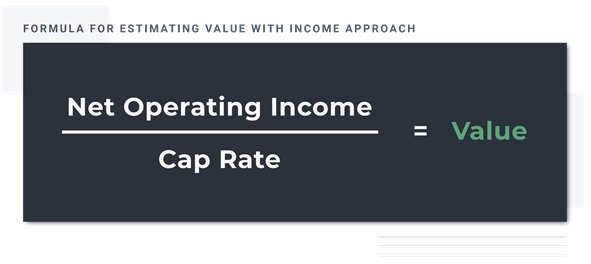This is part one of a two part series from our partner, AcrePro.
Farmland is a nonrenewable resource, and more and more people are becoming interested in owning their own farm.
Whether that is because they would like to become farmers themselves, or because they would like to own a farm as an investment and hire an operator, there are only a few constants when it comes to farmland: Farmland is valuable, farmland is limited, and farmland is essential.
So, what does this mean for the seller? How do you go about establishing an appropriate price for a farm given the nature of what you’re selling?
This article will cover the basics on learning how to value your farmland, including:
Competitive Market Analysis
Comparables Approach
Income Approach
Valuing Your Farmland
The basics of valuing farmland generally include evaluating a competitive market analysis, comps (comparable sales), and income. But it’s not just about following a set of steps in a process. It is an intricate journey that is unique in every aspect and requires considerable due diligence.
Competitive Market Analysis
Familiarizing yourself with the local land market in your area is a good starting point. Often, a specialized land agent can provide local expertise. If you’ve already started looking at neighboring listings in the region, you may have begun seeing trends in the local market on your own. Now you need to look at a Competitive Market Analysis (CMA).
A competitive market analysis is a report often provided by a real estate agent. This will generally include property data like size, soil type, elevation, and more. It may also include data from previous listings, recent sales, current listing comparables, and micro-market trends.
The goal of a competitive market analysis is to recommend a listing price based on all available data and current market conditions for your specific market (region).
Comparables Approach
Evaluating comparables means estimating value based on recent comparable sales in the area that your farm is located. This information can be obtained from public records, real estate websites, and other appraisers.
The sale price of a neighboring farm is not necessarily indicative of the price of your farm, for better or for worse. Maybe the neighboring farm had compromised the integrity of the soil, but your farm has above average soil ratings. Maybe the topography is vastly different from one farm to the next. Even water rights and irrigation can differ from one parcel to the next.
So how do you accurately value your farmland based on comparables?
Your Farmland Data
Before you can look at comparable sales, you will first need to break down what features your farmland has, and analyze anything that may affect the value.
Consider these questions:
- What structures are in working order on your property? This can be a barn, grain bin, etc.
- Does your property have necessary irrigation and drainage in place? Consider whether your region and soil types require irrigation, and if not, is drainage tile necessary and in working order?
- Is your farmland currently being farmed? What types of crops are you growing? What is the production history? How much are those commodities worth at this time?
- What are the soil ratings on your property, and have you maintained the integrity of that soil?
- Consider the infrastructure of your property. Will it be easily accessible with large equipment? Are there any major highways nearby?
These questions are all nuanced, but a real estate agent that is an expert in farmland may be able to help you really identify and accentuate the strengths of your land.
Neighboring Land Data
Now that you have a list of the features on your own property, you can begin looking at actual comparables. What does your land have in common with neighboring properties that have recently sold?
Once you’ve identified properties with similar characteristics, you should be able to start forming an estimate of your own property’s value, or adjust the value that you originally settled on based on the sales performance of recent, similar listings.
Income Approach
An income approach is self explanatory. If the farm is currently producing income, then it is widely believed that the purchase of the farm should reflect the potential income that the buyer may enjoy. To calculate property value based on the income approach, appraisers generally use a formula.

This approach takes the net operating income (the annual income of an investment property) and divides it by the capitalization rate (the ratio of a property’s income over its cost).
While math may not be your strong suit, rest assured that a specialized land agent can help you get an accurate appraisal value before you list your farmland.
Final Thoughts
It can be overwhelming to value your farmland, but a specialized land agent, such as a member of the REALTORS® Land Institute, can make this process easier. Not every real estate agent has the local land market expertise to value your farmland accurately, so seeking out an agent that is well versed in farmland, micro markets, market analytics, and land in general is essential to the process.
Getting an accurate read on your farmland’s value may be the deciding factor on whether or not you are willing to part with your piece of paradise (and potentially your source of income).
To recap, a few ways to find the right price for your farm are:
- A competitive market analysis will help you begin to understand the local land market.
- Looking at comparables that are of like-kind to your farm can help you gauge the price that people are willing to pay in your region.
- If your farm is currently producing income, utilizing an income approach will help build credibility because it can showcase what your property is currently producing and has to offer.
Farmland valuation is a beast of a topic, and we have just scratched the surface. In part two of How To Value Farmland, we will discuss how to add value to your farmland before listing.
 This article was written by Rachel Bevill-Cottrell and was submitted by our partner AcrePro. Rachel grew up in the rural Arkansas Ozarks on a small ranch in the bend of Piney Creek. She competes in barrel racing, raises and sells horses, and owns a small hobby farm and ranch business. She enjoys writing about farming, agriculture, and all things land related.
This article was written by Rachel Bevill-Cottrell and was submitted by our partner AcrePro. Rachel grew up in the rural Arkansas Ozarks on a small ranch in the bend of Piney Creek. She competes in barrel racing, raises and sells horses, and owns a small hobby farm and ranch business. She enjoys writing about farming, agriculture, and all things land related.